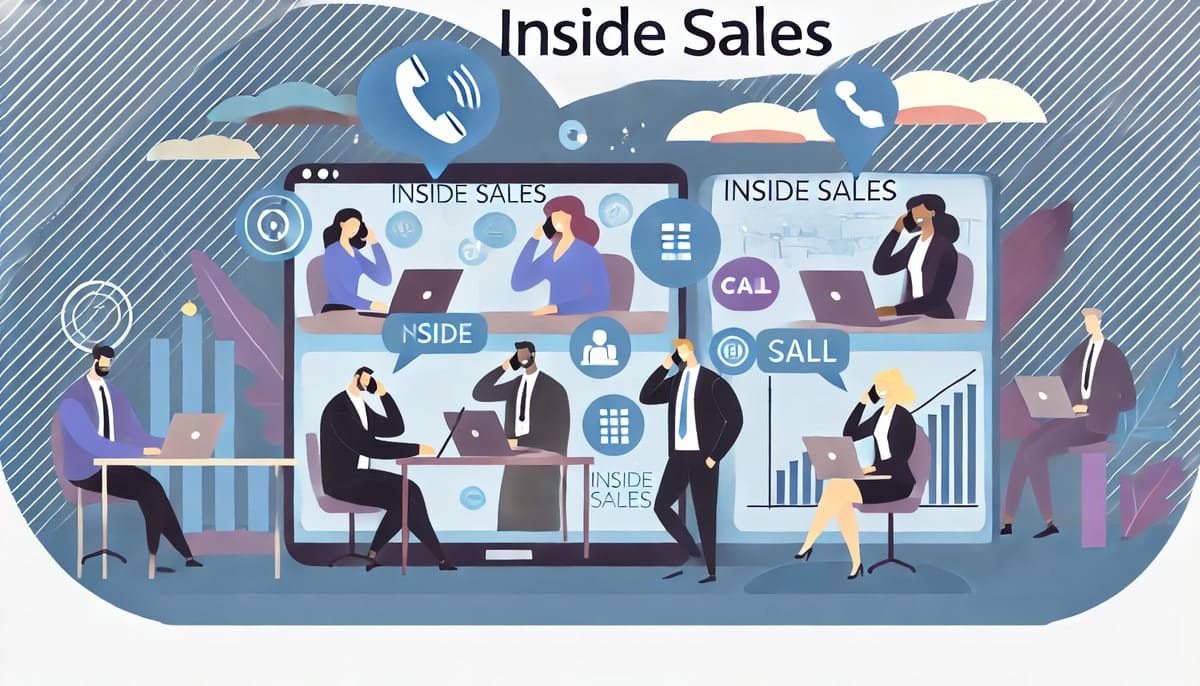Inside Sales: Techniques, Benefits, and Strategies for Success

Inside sales is the modern approach to remote selling. Discover techniques, tools, and benefits that make inside sales a top choice for businesses looking to connect with clients virtually.
The Complete Guide to Inside Sales: Techniques, Benefits, and Tools
30-Second Summary
Inside sales is a sales strategy that relies on virtual communication, allowing sales teams to connect with customers remotely. This guide covers the basics of inside sales, from key techniques to the benefits of selling from anywhere, making it a go-to method for businesses of all sizes.
Inside sales have become increasingly popular as businesses look for flexible, efficient ways to reach their customers. Unlike traditional “outside” or in-person sales, inside sales happen virtuall often over the phone, email, or video calls. This approach enables teams to connect with customers from any location, making it a practical choice for remote-friendly businesses.
Imagine a sales team that’s always just a call or a click away from a potential customer, no matter where they are. Inside sales make this possible, allowing sales teams to stay connected, responsive, and effective, without ever leaving their desks.
Key Techniques and Strategies for Inside Sales Success
1. Building Strong Relationships Through Virtual Communication
Successful inside sales start with meaningful communication. Sales representatives connect with potential clients through calls, video meetings, and email to build relationships without face-to-face interactions. Using personal touches, like addressing specific needs, helps create a lasting connection.
2. Using Inside Sales Tools for Efficiency
There are numerous tools to help inside sales teams stay organized and efficient. Customer relationship management (CRM) software like Salesforce or HubSpot tracks interactions and helps manage client relationships. Additionally, video conferencing tools like Zoom and email marketing software streamline communication and follow-ups.
3. Relying on Data and Analytics
Data is essential in inside sales. Analyzing data from past interactions, customer behavior, and conversion rates allows sales teams to adjust their approach and target the right customers. This data-driven strategy enhances decision-making and helps personalize outreach.
4. Aligning with Marketing for a Cohesive Approach
Inside sales teams often work closely with marketing departments to ensure a consistent message. By coordinating with marketing on campaigns and content, sales teams can reach customers at the right time and with relevant information.
Benefits of Inside Sales
1. Cost-Effective and Flexible
Inside sales don’t require travel, which saves on costs and reduces time spent between customer meetings. This approach also allows flexibility, making it easier to scale up or down as needed.
2. Easier to Reach a Broader Audience
Virtual selling allows companies to reach customers beyond their immediate location. Inside sales teams can target both local and international clients from a single office.
3. Ideal for B2B and SaaS Sales
Inside sales are especially effective for B2B and SaaS (software-as-a-service) businesses, where long-term relationships and remote customer support are essential.
4. Faster and More Frequent Follow-Ups
Sales teams can easily follow up with leads via email or calls, speeding up the sales cycle. Quick communication is key in inside sales, ensuring potential customers receive timely information and support.
Inside Sales vs. Outside Sales
While inside sales focuses on virtual interactions, outside sales involves in-person meetings and travel. Each method has its benefits, but inside sales are more adaptable, cost-effective, and easier to scale, making them ideal for today’s remote work environment.
Conclusion
Inside sales offer a practical way to reach customers and build relationships without the need for travel or in-person meetings. With the right techniques and tools, inside sales teams can create meaningful connections, save on costs, and engage with clients effectively from anywhere. Embracing inside sales can enhance flexibility and set businesses up for success in a digital world.
Inside sales rely on virtual communication to reach customers remotely. Learn key strategies, tools, and the benefits that make inside sales a great fit for modern businesses.
Takeaway:
Inside sales is a powerful, flexible approach to building customer relationships without in-person meetings. By using virtual tools and data-driven techniques, businesses can connect with clients effectively, making it a popular choice for B2B and SaaS companies.